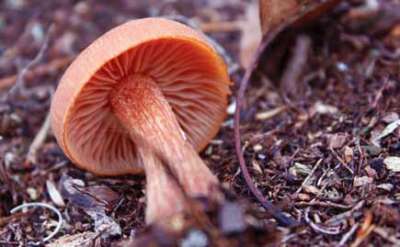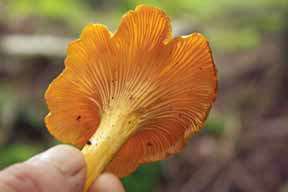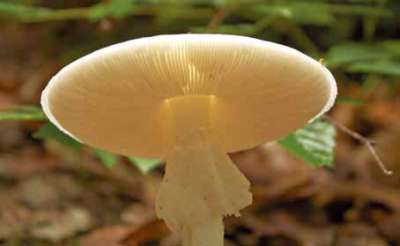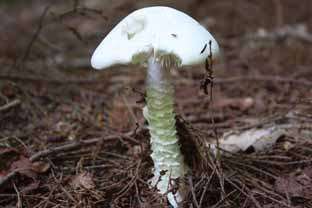September can feel like summer, but we also see glimmers of autumn – a change in the light, goldenrods and asters blooming, mushrooms of various species emerging and proliferating in fields and forests.
Like many outdoor enthusiasts, I am fascinated with mushrooms. I marvel at their endlessly varied shapes and colors and smells and at their otherworldly aspects as they arise in darkness and flourish without sunlight. I’ve also been drawn to them as food: now, when I use them in recipes, and years ago, as a boy, when I grew the common meadow mushroom (the one you find in most grocery stores) in flats in the basement of our home and sold them to neighbors. Growing them was my first money-making venture, even preceding the obligatory paper route. As the mushrooms matured, I would harvest them and make deliveries by bicycle, my handlebar basket heaped full.
Wild mushroom gathering came later in life. It has become for me, as it is for people in various cultures around the world, a much-anticipated seasonal ritual, much like picking berries or apples. Those in our region who eat wild mushrooms have different hunting approaches. Some seek only a familiar, favorite species, such as that common meadow mushroom, certain boletus (mushrooms with spongy pores instead of gills), the orange chanterelle, or the odd-looking morel, which appears in spring. Others with more field experience, catholic taste, or adventurous spirit collect a wider variety. These might include shaggy manes, some puffballs, hen of the woods, or oyster mushrooms. My wife and I gather a limited variety, including morels and puffballs – one giant puffball can make delicious “steaks” for a crowd. But our favorite is the edible chanterelle, which we also once sold to high-end restaurants in the area.
The gastronomic appeal of mushrooms comes, however, with a risk: poisoning. Reported cases of mushroom poisoning in the Northeast occur regularly if infrequently, with most due to incautious novice collectors mistaking similar-looking species, one edible, one not. For example, the “egg” stage of an emerging deadly amanita, before its cap unfolds, can look quite like an edible puffball. Fortunately, most mushroom poisonings in our area are nonfatal, involving gastrointestinal disturbance and maybe only a headache. But it’s still enough to ruin memories of an otherwise pleasurable outdoor experience.
The manner of poisoning can be weird. For example, most inky caps, so-called because the fringes of their caps turn to a dripping black liquid as they grow older, are generally benign, but when consumed with alcohol, they can cause stomach distress, even unconsciousness. People have different tolerances and responses to poisonous mushrooms. The orangetopped fly agaric can induce hallucinations of several hours in some people or a short-term but severe illness in others. A few mushrooms, however, are broadly lethal, causing a death that is preceded by a long agony.
About a dozen known mushroom toxins affect different human organs in different ways and over different periods. The toxins can attack the liver, kidneys, lungs, heart, nerves, brain, blood vessels, or even the blood itself. The effects can be immediate, or they can take days or weeks to develop. In fatal cases, multiple, irreversible injuries can occur even before the victim feels any symptoms. In the Northern Forest, the two most notorious and dangerous species of mushrooms, both in the genus Amanita, are the aptly named “destroying angel” and “death cap.” Both have an eerie, ghostly whiteness as they emerge in the shade of the forest; both species are deadly even if small amounts are consumed. A third, highly dangerous species in this region is the “deadly galerina,” a small, brown-gilled species that grows on rotting logs. Its existence may be the reason for the adage, “Beware of little brown mushrooms.”
Beware, too, of the myriad false notions about poisonous mushrooms, many of which have been handed down through folklore. Among them: that poisonous mushrooms are always brightly colored; that they taste bad, often bitter; that they can be rendered safe by boiling or drying; that they are okay if animals eat them; that they are dangerous if they turn different colors when bruised. These aphorisms may have some validity but certainly not in all cases.
The safest course is never to take a chance. If you are just beginning the wonderful pursuit of mushroom hunting this season, go with someone highly experienced in the field. Understand that mushroom identification can be confusing, even to experts.





